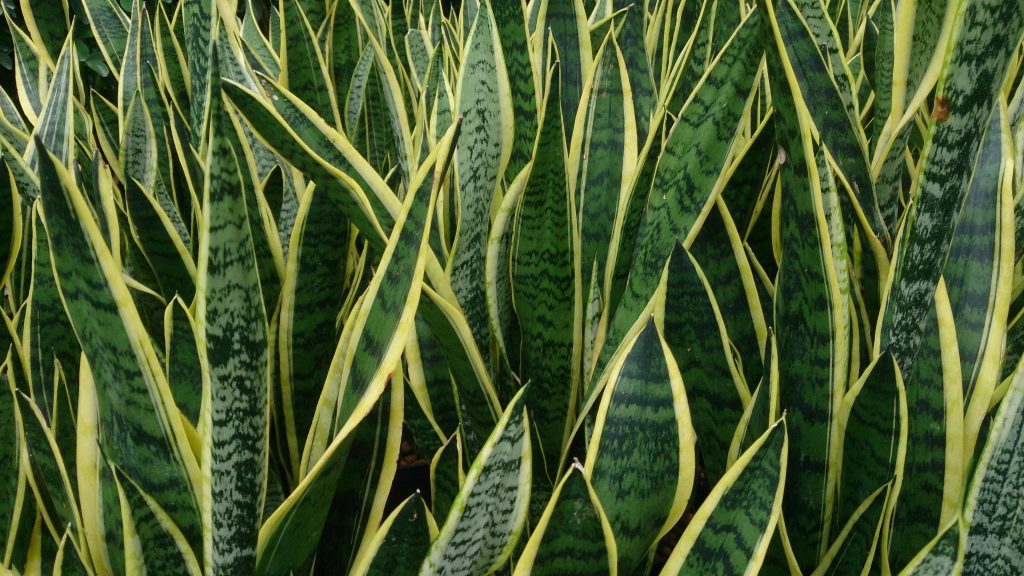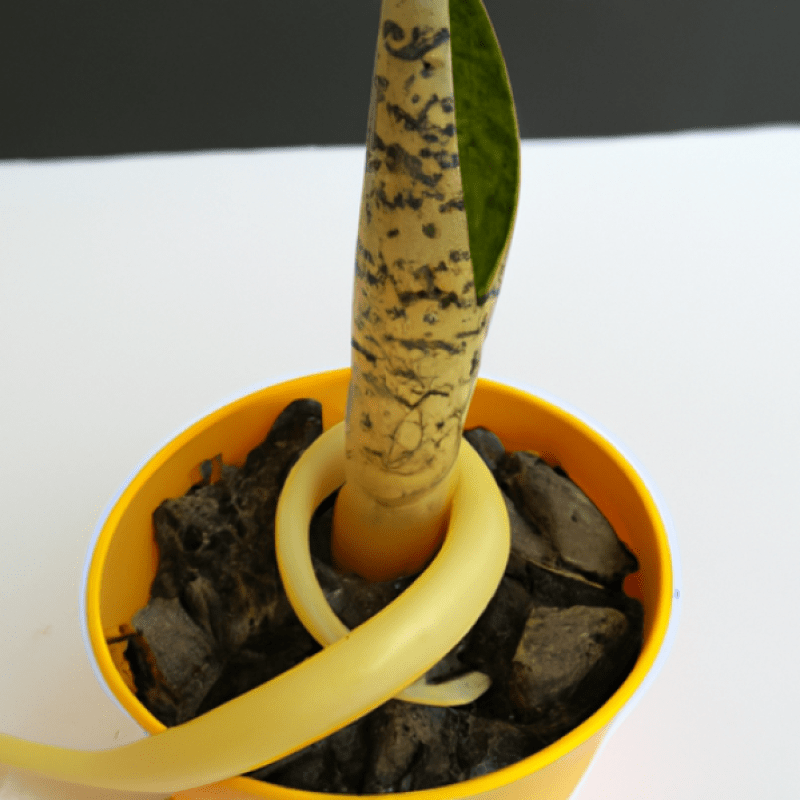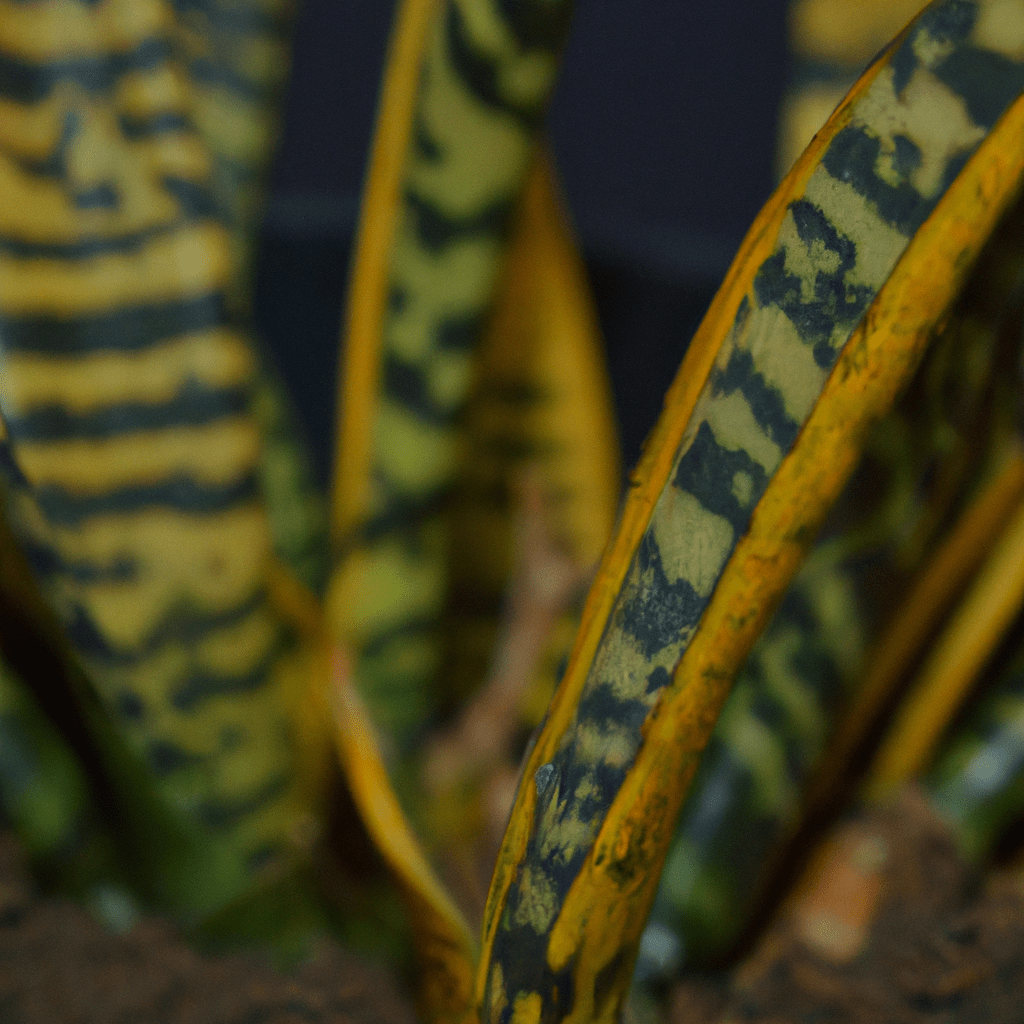The Sansevieria Zeylanica, commonly known as the Snake Plant or Mother-in-Law’s Tongue, is a fascinating and enigmatic species belonging to the Asparagaceae family. Native to tropical regions of West Africa, this evergreen perennial has captivated the hearts of both botanists and plant enthusiasts worldwide with its intriguing characteristics and diverse applications.
This remarkable plant boasts long, upright, sword-shaped leaves that can reach impressive heights of up to 2.5 feet. Exhibiting a mesmerizing pattern of dark green coloration with light green, wavy stripes, it adds a touch of elegance and visual interest to any space. The leaves grow in a dense rosette arrangement, creating a strikingly bold and architectural presence.
Notably, Sansevieria Zeylanica possesses remarkable air-purifying abilities, making it an excellent choice for indoor settings. It efficiently filters toxins and releases oxygen, enhancing the overall indoor air quality. Furthermore, this resilient species is known for its ability to tolerate low light conditions and can thrive in a variety of environments, making it a versatile choice for any plant lover.
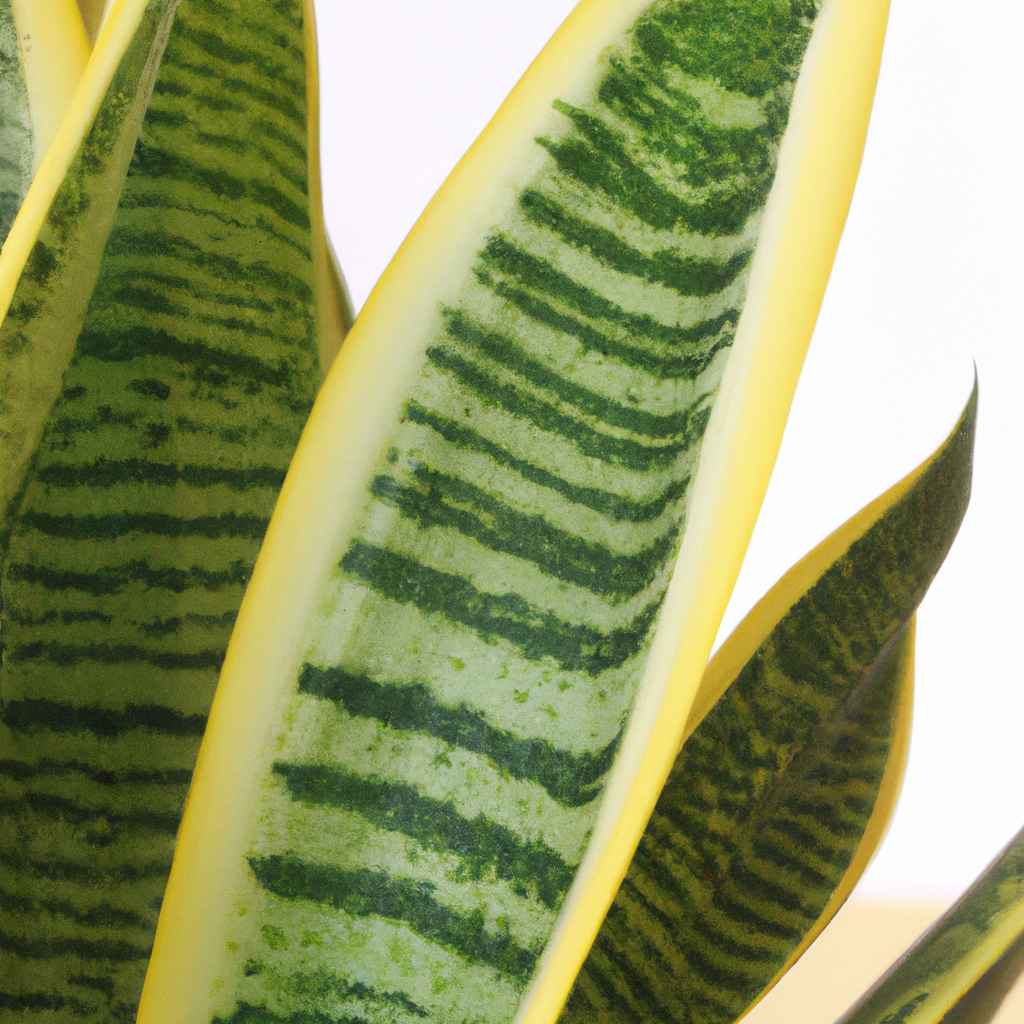
How to Care Sansevieria Zeylanica?
Light Requirement
The Sansevieria Zeylanica is an intriguing plant that possesses unique light requirements. Understanding the optimal lighting conditions for this species is essential to ensure its healthy growth and development.
Partial Shade: Sansevieria Zeylanica can tolerate partial shade but thrives best in bright but indirect light. It can endure lower light levels, making it suitable for locations with limited sunlight. However, exposing the plant to direct sunlight for prolonged periods can result in its leaves getting scorched. Therefore, finding the right balance between light and shade is crucial for its well-being.
Indoor Light: When growing Sansevieria Zeylanica indoors, it is recommended to place it near a north or east-facing window to provide ample bright, indirect sunlight. While it can tolerate lower light conditions, it may not thrive or produce new growth as vigorously. Be cautious not to place it too close to a window with direct afternoon sun, as this may damage the plant.
Water Requirement
Moderate watering: Sansevieria Zeylanica requires moderate watering, which means it should be watered when the top 2 inches of the soil are dry. Overwatering can lead to root rot and other fungal diseases, while underwatering can cause the leaves to dry out and wilt. So, it’s essential to find the right balance.
Watering frequency: Watering Sansevieria Zeylanica every 2-3 weeks during the warmer months is generally sufficient. However, the frequency may vary depending on factors such as temperature, humidity, and the size of the pot. It’s important to observe the plant’s moisture levels and adjust the watering schedule accordingly.
Watering technique: When watering Sansevieria Zeylanica, it’s important to ensure that excess water drains out of the pot. Avoid leaving the plant in standing water as this can cause root rot. Water the plant thoroughly until water starts to flow out of the drainage holes. Allow the soil to dry out between waterings to prevent overwatering. Remember, providing the correct amount of water is vital for the health and well-being of your Sansevieria Zeylanica. By following these watering guidelines, you can help your plant thrive and maintain its vibrant appearance.
Soil Requirement
Well-draining soil: Sansevieria zeylanica prefers well-draining soil that allows excess moisture to escape. It is important to avoid waterlogged conditions, as this can lead to root rot and other issues. To promote good drainage, consider adding perlite or vermiculite to the soil mixture.
Sandy or loamy texture: This snake plant thrives in soil with a sandy or loamy texture. Such soil types provide a balance between water retention and drainage, allowing the plant’s roots to access necessary moisture while preventing excess water accumulation. Avoid using heavy clay-based soil, as it retains water and can suffocate the roots.
pH range: Sansevieria zeylanica prefers soil with a slightly acidic to neutral pH range, ideally between 6.0 and 7.0. Maintaining the appropriate pH level ensures optimal nutrient availability for the plant’s growth. Regularly test the soil pH using a testing kit and adjust it if necessary with the help of organic amendments, such as lime or sulfur.
Temperature Requirement
Sansevieria Zeylanica is a fascinating plant that has perplexing temperature requirements. Given its tropical origins, it can tolerate a wide range of temperatures but thrives in a specific sweet spot. Maintaining the ideal temperature for this plant will ensure its maximum growth and health.
Temperature Dos:
– Provide Sansevieria Zeylanica with a warm environment, ideally between 70 to 90 degrees Fahrenheit.
– During the daytime, encourage temperatures to be on the higher end of the spectrum to support active growth.
– Allow for slight temperature fluctuations to mimic natural conditions, but avoid sudden extreme changes.
– In cooler climates, consider placing the plant near a window or using a heating pad to sustain the desired temperature range.
Temperature Don’ts:
– Avoid excessive heat above 90 degrees Fahrenheit, as it can cause stress and damage to the plant.
– Steer clear of drafts and cold air, as Sansevieria Zeylanica prefers warmer environments.
– Protect the plant from freezing temperatures, as it is not frost-resistant.
– Prevent drastic temperature fluctuations, as they can negatively impact the plant’s overall well-being.
Humidity Requirement
The Sansevieria Zeylanica is a resilient species that can adapt to a wide range of conditions. However, when it comes to humidity, this plant poses a fascinating enigma. In its natural habitat, the tropical rainforests of West Africa, the humidity levels can often be quite high. However, the Sansevieria Zeylanica is surprisingly not as demanding when it comes to humidity as one might expect.
Unlike many other tropical plants, the Sansevieria Zeylanica possesses the extraordinary ability to thrive in both low and high humidity environments. It can comfortably accommodate humidity levels ranging from as low as 20% to as high as 80%. This adaptability is due to its succulent leaves that store moisture. In low humidity conditions, the leaves will conserve water, while in high humidity conditions, the excess moisture is released through transpiration. This exceptional capacity allows the plant to flourish in a variety of climates, making it an excellent choice for both dry and humid regions.
Tips for Maintaining Optimal Humidity:
- Avoid placing the Snake Plant near sources that generate dry heat, such as radiators or fireplaces.
- In dry environments, increase humidity by placing a tray filled with water near the plant or using a humidifier.
- If the humidity is too high, ensure proper ventilation and avoid overwatering to prevent root rot.
- Monitoring the humidity levels using a hygrometer can be beneficial in creating the perfect environment for your Sansevieria Zeylanica.
Fertilization Requirement
When it comes to the fertilization requirements of Sansevieria Zeylanica, it is essential to consider a few key factors. Timing plays a crucial role in achieving optimal results. It is recommended to fertilize this plant during its active growing season, which typically occurs in the spring and summer months. By fertilizing at the right time, you can provide your Sansevieria Zeylanica with the nutrients it needs to thrive.
Another important consideration is the choice of fertilizer. Sansevieria Zeylanica requires a well-balanced, high-quality fertilizer. Look for a fertilizer that contains equal ratios of nitrogen, phosphorus, and potassium (N-P-K), which are essential macronutrients for plant growth. Additionally, organic fertilizers are often preferred as they provide a slow-release of nutrients and improve the overall soil quality.
Lastly, proper application techniques are crucial for effective fertilization. It is recommended to dilute the fertilizer to half of the recommended strength to avoid over-fertilizing, which can be harmful to the plant. Applying the fertilizer evenly to the soil around the base of the plant is preferred. Make sure the soil is moist before applying the fertilizer, as dry soil can prevent proper absorption. Remember to always follow the instructions provided by the fertilizer manufacturer for best results.
Potting and Repotting
When it comes to potting and repotting Sansevieria Zeylanica, it’s vital to select a suitable container. The ideal pot should have sufficient drainage holes to prevent waterlogging, which can lead to root rot. A well-draining soil mix is crucial to avoid saturation and improve aeration. A blend of potting soil, perlite, and sand is recommended.
It is crucial to handle the roots of Sansevieria Zeylanica with utmost care during repotting to prevent any damage. Using a clean sharp knife or shears, separate the plant from its current container, ensuring not to harm the roots. Gently smooth out the root ball to remove any excess soil and identify any signs of rot or disease. Trim any damaged or decaying roots using sterile tools.
After removing any damaged roots, place the Sansevieria Zeylanica into the new pot, ensuring that the plant sits at the same level as before. Fill the remaining space in the pot with the soil mix, gently firming it around the roots. Avoid compacting the soil too much, as it may hinder proper drainage and air circulation. After repotting, provide adequate water and place the plant in a well-lit area, but avoid direct sunlight.
Pruning
Sansevieria Zeylanica Pruning Pruning Sansevieria Zeylanica is crucial to maintain its health and beauty. Let’s dive into the perplexing world of plant maintenance and discover the burstiness of pruning this unique species.
Why prune Sansevieria Zeylanica?
Stimulates growth: Pruning encourages the plant to produce new shoots, resulting in a fuller and more vibrant appearance.
Maintains size: Regularly removing old or damaged leaves controls the plant’s height and prevents it from becoming unruly.
Enhances air circulation: Trimming overcrowded foliage allows the plant to breathe better, reducing the risk of diseases or pests.
When to prune Sansevieria Zeylanica?
Springtime splendor: It is recommended to prune during spring when the plant is entering its active growth phase.
Not during dormancy: Avoid pruning in winter when the plant goes into dormancy, as this may hinder its ability to recover.
When necessary: Prune when leaves are yellowing, damaged, or crowding each other, as well as to maintain the desired size and shape.
How to prune Sansevieria Zeylanica?
Clean tools: Ensure your pruning shears are sterile to prevent the spread of diseases. Wipe them with rubbing alcohol between cuts.
Selective cuts: Remove individual leaves or entire leaf clusters at the base, using sharp, clean cuts to prevent unnecessary damage.
Regular maintenance: Regularly remove dead or dying leaves to encourage new growth and keep the plant looking neat. Remember, pruning Sansevieria Zeylanica requires a delicate balance between preserving its natural form and promoting its overall well-being. Embrace the perplexity and burstiness of this task, as it nurtures your plant’s health and brings out its true radiance.
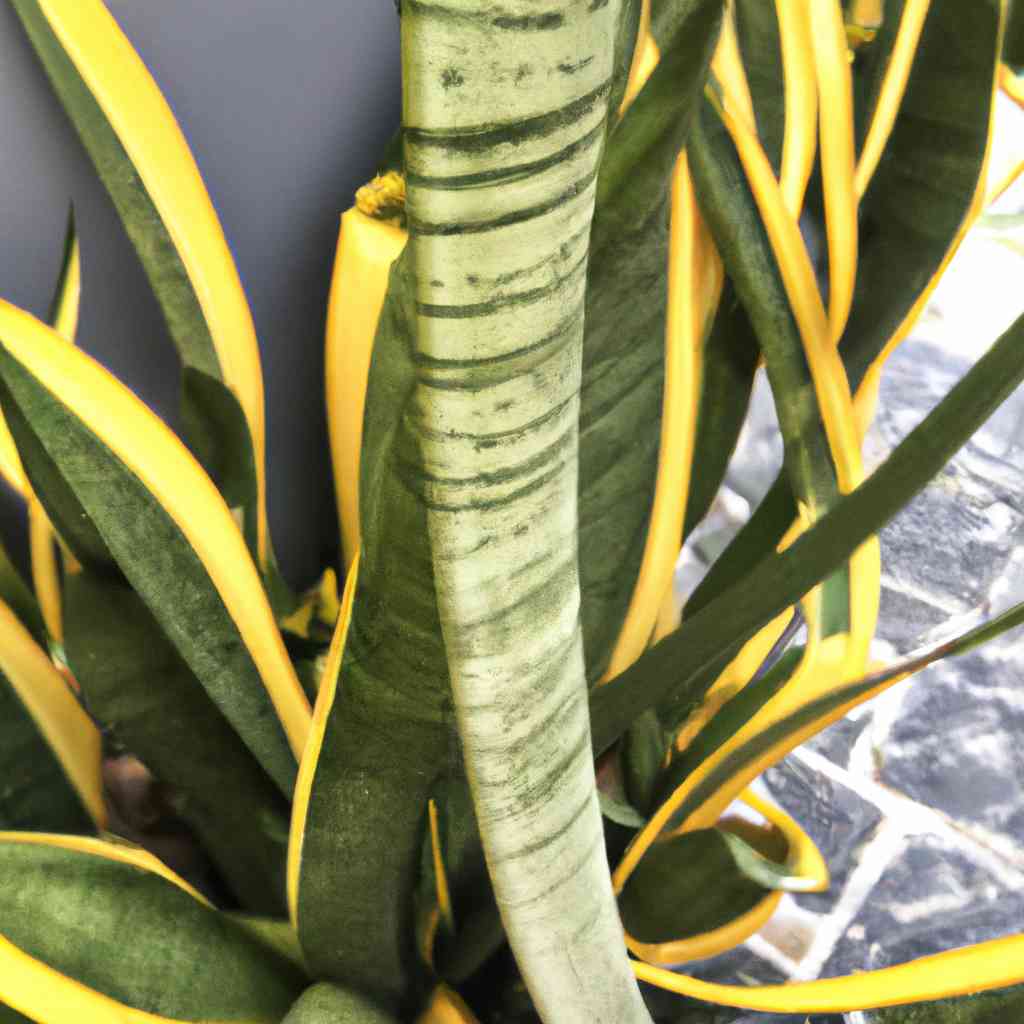
Pests and Diseases
Sansevieria Zeylanica, with its intriguing appearance and hardy nature, is a wonderful addition to any indoor garden. However, like all plants, it is susceptible to certain pests and diseases. It is essential to be aware of these potential issues to ensure the health and vitality of your Sansevieria Zeylanica. Pests can pose a significant threat to the well-being of your Sansevieria Zeylanica.
Some common pests to watch out for include spider mites, mealybugs, and aphids. These tiny creatures can gradually weaken the plant, leading to yellowed leaves, stunted growth, and even plant death. To combat pest infestations, regularly inspect your Sansevieria Zeylanica for signs of damage, especially under the leaves. In case of an infestation, consider using natural remedies such as neem oil or insecticidal soap to minimize harm to the plant. Moreover, diseases can also affect the health of your Sansevieria Zeylanica. Fungal infections can arise if the plant is exposed to excessive moisture or if the humidity level in its environment is too high. These infections often manifest as brown spots or rot on the leaves. To prevent such diseases, make sure to water your Sansevieria Zeylanica sparingly and allow the soil to dry out between waterings.
Additionally, ensure proper air circulation around the plant, and avoid over-watering or using heavy soils that retain moisture. By remaining vigilant and promptly addressing any pest or disease issues, you can keep your Sansevieria Zeylanica thriving and vibrant. Regularly inspect the plant for signs of pests, provide it with appropriate watering and care, and your Sansevieria Zeylanica will continue to be a stunning focal point in your indoor garden.
How to Propagate Sansevieria Zeylanica?
Propagating Sansevieria Zeylanica can be an exciting endeavor for green thumbs looking to expand their plant collection. However, it is important to approach this process with caution and patience, as it can be a bit tricky.
There are a few methods that can be used to propagate Sansevieria Zeylanica:
- Leaf cuttings: Select a healthy leaf and cut it into several sections. Ensure each section has a part of the leaf base attached. Plant the sections in well-draining soil and keep them moist until new roots develop.
- Rhizome division: Carefully remove the plant from its pot and gently separate the rhizomes. Make sure each division has roots attached. Repot the divisions into separate containers, ensuring they have sufficient space to grow.
Regardless of the propagation method you choose, it is important to provide the newly propagated Sansevieria Zeylanica with the optimal growing conditions. Place the cuttings or divisions in a warm and well-lit location, but away from direct sun. Keep the soil consistently moist, but not waterlogged, to encourage root development. With time and care, you can witness the successful propagation of this fascinating plant species!
Is Sansevieria Zeylanica Poisonous?
Believe it or not, Sansevieria Zeylanica has bewilderingly perplexed botanists and enthusiasts for years when it comes to its toxicity levels. While some sources suggest the plant is non-toxic, bold claims assert its potential to induce an array of symptoms in unsuspecting individuals. Bursting with controversial findings, this enigmatic foliage keeps us on our toes.
Intriguingly, scattered incidents report allergic reactions, gastrointestinal disturbances, and skin irritations upon contact with Sansevieria Zeylanica. The perplexity arises as some individuals blissfully coexist with this plant, while others experience unexplainable discomfort after mere proximity. Although not widely documented, anecdotal evidence emphasizes the polarizing nature of this enigma, leaving us with more questions than answers.
It is crucial to exercise caution and prudence when interacting with Sansevieria Zeylanica. The prevailing perplexity surrounding its toxicity levels necessitates careful consideration, especially in households with children or pets. To mitigate potential risks, it is advisable to keep this plant out of reach, limit direct contact, and closely monitor any unusual symptoms in individuals who may come into contact with it. Further research is essential to unravel the enigma that is the Sansevieria Zeylanica.
Common Problems
Unfortunately, Sansevieria Zeylanica is not impervious to its fair share of common issues. To ensure optimal growth and health, keep an eye out for these perplexing predicaments:
Overwatering: Excessively waterlogged soil is the bane of this plant’s existence. It leads to root rot, yellowing leaves, and overall decline. Burst this bubble of troubles by allowing the soil to dry out between watering sessions. A thorough drenching once every 2-3 weeks is usually sufficient.
Inadequate drainage: Without proper drainage, Sansevieria Zeylanica can suffer from stagnant water and soggy roots, causing distress and disarray. Ensure that its habitat boasts well-draining soil and a pot with drainage holes. If growing in water, ensure it’s not submerged in excessive H2O and change it frequently to avoid stagnation.
Low light intensity: Overexposure to darkness can cause Sansevieria Zeylanica’s colors to fade and its growth to stagnate. On the flip side, exposing it to intense sunlight can result in scorched leaves. Find the perfect equilibrium by providing bright indirect light. Shield it from harsh midday sunshine and make sure it receives a healthy dose of gentle luminosity throughout the day. Preparedness is key when it comes to handling these confounding conundrums. By adjusting watering practices, ensuring adequate drainage, and providing the right light conditions, you can unravel the enigma of Sansevieria Zeylanica’s common problems, allowing it to flourish in all its mesmerizing beauty.
Sansevieria Zeylanica vs. Robusta
Both Sansevieria Zeylanica and Robusta are known for their vibrant green leaves, but they differ in terms of size and pattern. Zeylanica features elongated, sword-like leaves with a light green color and dark green vertical stripes. On the other hand, Robusta showcases broader leaves that are dark green in color, often with horizontal patterns. While Zeylanica is ideal for smaller spaces, Robusta can grow much taller and wider. Whether you prefer the sleek and slender look of Zeylanica or the more robust appearance of Robusta, both varieties offer an elegant touch to any space.
Sansevieria Zeylanica vs. Black Coral
When comparing Sansevieria Zeylanica and Black Coral, it becomes clear that they are distinct in terms of leaf color and texture. Zeylanica exhibits a characteristic light green hue with dark green stripes, creating an eye-catching contrast. On the other hand, Black Coral lives up to its name, displaying dark, almost black leaves that are sleek and glossy. The contrasting colors make both plants excellent choices for adding depth and drama to any room. Whether you prefer the traditional charm of Zeylanica or the edgy allure of Black Coral, these plants will undoubtedly make a statement.
Sansevieria Zeylanica vs. Winter Green
Sansevieria Zeylanica and Winter Green differ primarily in leaf shape and texture. Zeylanica has long and pointed leaves, while Winter Green showcases shorter and wider leaves with rounded tips. Zeylanica’s leaves have a prominent ribbing pattern, adding to its visual appeal. In contrast, Winter Green has smoother leaves with a lighter shade of green. The distinct shapes and textures allow both plants to be versatile in styling. Whether you’re aiming for a sleek and polished aesthetic or a softer and subtler touch, both Zeylanica and Winter Green can meet your needs.
Sansevieria Zeylanica vs. Lurentii
Sansevieria Zeylanica and Lurentii are two visually striking plants with slight differences in leaf color and pattern. Zeylanica boasts striking dark green vertical stripes on a light green background, while Lurentii exhibits yellow margins framing its dark green leaves. These variations in foliage create distinct visuals, allowing homeowners to choose between the boldness of Zeylanica or the delicate beauty of Lurentii. Both plants thrive in indoor spaces and can effortlessly enhance any room’s overall aesthetic.
Final Words
The Sansevieria Zeylanica is a captivating plant with unique features that make it an intriguing addition to any botanical collection. With its long, sword-like leaves and striking variegated patterns, this species showcases nature’s artistry. Furthermore, this plant is remarkably resilient, thriving in a variety of environments, including low-light conditions and drought-prone areas.
In conclusion, the Sansevieria Zeylanica is a visually appealing and robust plant that adds an exotic touch to any space. It is adaptability and air-purifying qualities make it an excellent choice for both novice and experienced plant enthusiasts alike. Consider adding this remarkable species to your collection and enjoy the beauty it brings to your living environment.
